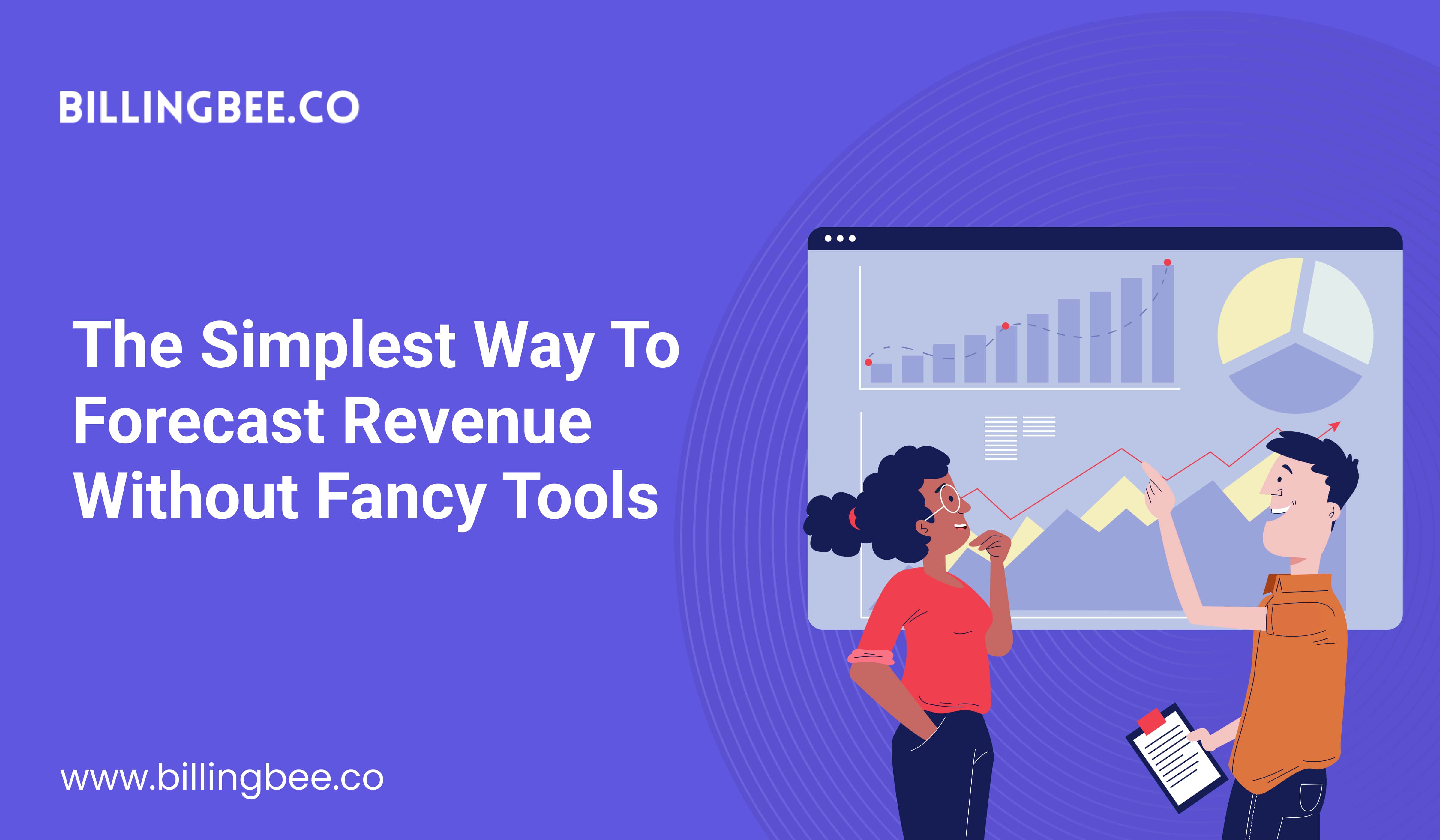The Simplest Way to Forecast Revenue Without Fancy Tools




If you’ve ever sat staring at your bank account wondering, “How much money am I actually going to make next month?”—you’re not alone. Every freelancer, solopreneur, or small business owner has been there. We don’t have finance departments or advanced forecasting dashboards like big corporations. Most of us are juggling client work, invoices, and emails, which leaves little time for complex financial planning.
The good news is, you don’t need complicated tools to get a sense of where your business is headed. With nothing more than your recent numbers and a bit of honest reflection, you can forecast your revenue in a way that feels both simple and surprisingly accurate.
Start with the Past Three Months
The easiest place to begin is by looking backward. Take your last three months of revenue, add them up, and divide by three. That’s your baseline—the average amount of money your business has been bringing in each month.
Why three months? Because it’s long enough to smooth out small ups and downs, but recent enough to reflect the current state of your business. Think of it as a snapshot of your “normal.”
Imagine this: in June you made $4,500, July brought in $5,000, and August climbed to $5,500. If you average those out, you land on $5,000. That number becomes your starting point for what you might expect next month.
Adjust for Reality
Of course, business is never as neat as an average. Maybe you’ve just signed a new client who’s going to add a healthy boost to your income. Or perhaps a project is wrapping up, which means next month won’t look quite as strong.
This is where you adjust your baseline. If your $5,000 average feels too low because you know a new project is kicking in, you might reasonably bump it to $5,500. On the other hand, if one client just informed you they’re pausing work, you’ll want to shave off what they typically pay—say $500—bringing your forecast down to $4,500.
This step is where the forecast starts to feel personal. It’s not just numbers anymore; it’s the story of your business.
Be Honest About Client Churn
One thing that many small business owners overlook is churn—the natural ebb and flow of clients coming and going. A retainer can end. A client can cut their budget. A contract might not get renewed. These things happen, and pretending they won’t only sets you up for disappointment.
So, be honest with yourself. If you sense a client is on shaky ground or has hinted at scaling back, build that possibility into your forecast. It might feel pessimistic, but in reality, it’s just being prepared. And if the client sticks around, then you’ll happily outperform your forecast.
Why This Simple Method Works
You might be wondering, “Isn’t this too simple?” But that’s exactly why it works. It forces you to ground your expectations in recent history, while also acknowledging the very real human side of business growth and loss. It’s fast, it’s flexible, and it’s something you can revisit every single month without feeling overwhelmed.
You don’t need to know advanced financial modeling. You don’t need to set up dozens of formulas in a spreadsheet. All you need is your recent revenue, a bit of honesty about what’s changing, and the discipline to check in regularly.
Use It as a Compass, Not a Crystal Ball
The point of this method isn’t to predict the future with absolute accuracy—no forecast can do that. Instead, think of it as a compass. It shows you the direction your business is likely heading, and it gives you the awareness you need to make better decisions.
Once you have your forecast, you can also compare it to your goals. If you forecast $4,500 but your target for the month is $6,000, that gap becomes clear. Suddenly, you know exactly how much more work you need to bring in or what kind of new clients you should be chasing.
Thoughts
Revenue forecasting doesn’t have to be intimidating. You don’t need predictive software or endless spreadsheets. By simply averaging your last three months and adjusting for growth and churn, you give yourself a practical snapshot of your near future.
It won’t always be perfect. Some months will surprise you, both higher and lower. But this simple approach keeps you grounded, helps you prepare for changes, and makes sure you’re not just guessing about what’s around the corner.
For most of us running lean businesses, that’s more than enough.